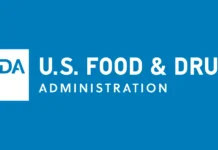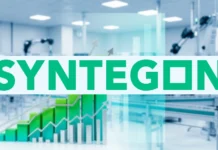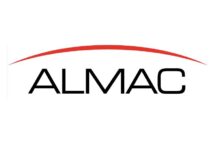In today’s fast-paced market, biotech firms continue to encounter many hurdles, especially during the clinical phase of drug development. Biologics may pose significant technical and commercial risks due to their exorbitant prices, intricate production procedures, and regulatory barriers. Nevertheless, by working with CDMOs, biotech businesses may significantly reduce the risks involved in drug development. Together, they can make smoother progress and have a better likelihood of success in their drug development endeavors.
Challenges seen within the Biotech Industry
As they continue to strive toward developing ground-breaking medicines to satisfy the needs of medical diseases that remain untreated, biotech businesses continue to play a prominent role in fostering innovation. When it comes to large-scale manufacturing and navigating complicated regulatory systems, these businesses often lack the resources and experience that larger, more established pharmaceutical corporations have. Many biotech businesses eventually experience what are known as “growing pains” as they get closer to launching their first product. Achieving commercial success requires adjustments to a number of areas, including operations, organization, skills, and viewpoints.
Consistent funding is another issue that comes up in the biotech industry. Minimal advanced investments, a quick time to market, and the ability to provide a sizable return on investment are characteristics of both a desired development and a commercial program.
Nevertheless, the process of developing new drugs has grown more expensive and dangerous, so biotech businesses that have good ideas at the beginning of clinical trials must carefully plan their route to later-phase growth and eventual commercialization.
It was previously observed that biotech businesses generally had two primary options: either they were acquired by a bigger entity or they chose the riskier route of growing capabilities internally. In the last several years, partnerships and service contracts like CROs and CMOs have come to light as viable choices that might reduce risk while also continuing to be more financially appealing.
CDMOs’ function in the creation of new drugs
CDMOs are experts in providing a broad variety of services that effectively support the whole drug development process. From formulation generation and process optimization to clinical and commercial manufacturing, CDMOs have all the necessary infrastructure, technical know-how, and regulatory understanding to ensure efficient and compliant production.
One of the key elements in lowering risk is effectively managing procedures. CDMOs effectively increase production efficiency, reduce unnecessary costs, and improve the overall quality of their goods by using technological innovation. This system helps biotech businesses create scalable and dependable production processes, ultimately enabling smooth transition from clinical trials to commercialization.
Biotech businesses may also profit from collaborating with CDMOs that provide extensive services related to both drug ingredients and drug products. They may benefit from an integrated quality system, a well-organized program management company, and an exceptionally effective supply chain by doing this. This integrated strategy minimizes the difficulties that come with managing a large number of vendors while still ensuring uniformity and coordination.
When it comes to risk reduction, cooperation
When biotech businesses work with an experienced CDMO, they may use a multitude of resources and skills. In addition to their extensive manufacturing knowledge, the CDMOs have a focus on regulatory compliance, quality systems, and both. Through this partnership, biotech businesses may focus on their core competencies in research and development while lowering the risks connected with production and regulatory barriers.
It becomes necessary to serve a much wider patient population as the development moves from the early to the late stages and eventually gets approved for launch. This means creating bigger batch sizes in addition to manufacturing more units. Additional regulatory criteria, such establishing validated techniques of analysis and reviewed processes, must also be followed. Starting your own commercial manufacturing business might be difficult, particularly if you don’t already have a strong portfolio. Furthermore, obtaining late-phase knowledge is a highly specialized activity that, if completed internally, may be expensive and time-consuming. By selecting a supplier that provides the manufacturing asset at the right size and handles the op-ex, working with an outsourcing business may assist reduce startup costs.
Working with a CDMO that has years of experience, medication authorizations, and a track record of successful development may significantly lower risk in the eyes of creditors. By providing enticing risk-sharing models with features like flexible production capabilities, termination clauses, or investment recovery possibilities, suppliers may reduce risk. The lower risk may entice investors and result in a better value after items are approved and the prediction materializes.
From a financial perspective
It seems that the potential of gaining experience in the biotech sector may become less attractive based on a simple financial analysis that takes into account variables like initial investment, time to market, discounts, and legal and economic changes. It could be more beneficial to collaborate with a provider instead.
Annual reports from Deloitte, KPMG, and EY center on deal-making in the major pharma sector. Usually, the buyer or licensor’s advantages are given priority in these studies. Accessing resources for decision-making might be difficult for a small biotech business that has opted out of the standard medication development process, which often entails pharmaceutical corporations acquiring biotechs they do not intend to sell.
The use of financial decision-making indicators in conjunction with a quantitative methodology allows an objective evaluation of the advantages and disadvantages of internal skill development vis-à-vis supplier collaboration.
When making financial calculations, the development timetable is quite important. This is especially true when determining how long regulatory exclusivity will last, how long it will take to get a return on investment, and how to commercialize a product. When regulatory exclusivity goes, profit margins narrow and rivalry increases.
As soon as clinical Phase 3 read-outs are available, launch times are often underestimated in estimations. Process validation in manufacturing, chemistry, and controls—CMC—are examples of activities that might add an additional two years to the entire development schedule. This is on top of the ten years that development typically takes. Product submission failure has been caused by the increasing complexity of biological product manufacture and controls, among other factors, which has made CMC a crucial part.
A new KPMG research named 2030 makes the prediction that ownership will decline, asset sharing will become more important, and fragmentation will increase in the future. In this scenario, different stakeholders will collaborate on a project-by-project basis in order to reduce risks that are associated with development. Based on the financial simulation that is provided here, biotechnology businesses entering the last stage may find that collaborating with a CDMO is the best option.
Future developments with CDMOs are anticipated to shift away from transactional interactions and toward more flexible partnership solutions. These collaborations can include a larger investment from CDMOs in addition to stock from the biotech side. As part of the commitment, teams may be assigned to provide regular and reliable assistance throughout the development process, as well as sharing resources like production suites.
To sum up
The partnership between CDMOs and biotech corporations has grown to be a potent tactic in the dynamic realm of drug development. This aids in lowering the process’s associated dangers. By leveraging CDMOs’ experience and resources, biotech businesses may improve their capacity to negotiate the complex manufacturing and regulatory environment. The likelihood of a successful drug development project is raised by this strategic alliance.
Financially speaking, working with a CDMO that has years of experience and a track record of success may also significantly lower risk in the eyes of creditors. By offering appealing risk-sharing models with adaptable production capacity, dismissal clauses, and chances for investment recovery, CDMOs may provide extra financial advantages. The lower risk may ultimately attract investors and lead to a better value after items have been certified and the projection comes true.
Together, these crucial alliances quicken the pace of development and raise the possibility of success. In the end, they foster creativity and make it possible for more people in need of life-altering therapies to get them.




















